|
header
|
 |
|
MENU
|
|
 |
TORN - PAPER CALLIGRAPHY
23 / 09
~ 05 /
10
2008
Torn-Paper Calligraphy is a
unique art form combining the arts of calligraphy and
paper tearing. The calligraphic works, created by
tearing paper with the bare hands, are later mounted in
frames. Skilful and intricate, this craft can produce
calligraphy of various styles including the standard,
cursive, clerical and seal scripts and is even employed
in seal carving.
Jiang
Jinghua is a master of folk art from Anhui Province and
the pioneer of Torn-Paper Calligraphy. One of the
representative artists who carry on the intangible
cultural heritage of Anhui Province, his works have been
awarded gold prizes in various important exhibitions
throughout the country. |
| |
|
 |
BAMBOO JOINERY ART
23 /
09 ~ 05
/ 10
2008
The Huang Mountain area has
always bristled with bamboo groves. Products made of bamboo fall into three
categories of bamboo craft: bamboo plaiting, bamboo sculpture and bamboo
joinery. Derived from traditional bamboo sculpting arts, bamboo joinery employs
modern techniques to create products that are modernistic in both form and
character. Works include wall-hung portraits, three-dimensional portraits and
abstract ornaments.
Drawing on the arts of stone
carving, wood carving and paper cutting, Sun Fengji – who was born and raised in
the district of Huang Mountain – originated the art of bamboo joinery. He has
created over 1,000 art works over the past 40 years. As one of the pioneers of
Huang Mountain arts and crafts, Sun has joined many exhibitions at home and
abroad and won numerous awards. |
| |
|
 |
PAPER CUTTING
07
~ 19 / 10
2008
Paper Cutting is the craft of
cutting and sculpting paper and is an ancient and traditional Chinese folk art.
Because its tools and materials are commonplace and its skills are relatively
easy to master, paper cutting as an art form has spread across the country and
is universally respected by the general public.
Fang Junhua, a young artist from
Anhui Province, excels in the art of paper cutting. Drawing on its traditional
legacy, he skilfully manages to incorporate the arts of Chinese poetry,
calligraphy, painting, and seal carving into the creation of paper cuttings. A
solo exhibition of his works was hosted in Hefei, and in 2007 he was awarded the
silver medal in the Nationwide Calligraphy and Painting Talent Selection. |
| |
|
 |
PHOENIX PAINTING
07 ~ 19
/ 10
2008
Phoenix painting is a unique
regional art peculiar to Fengyang, the birthplace of Emperor Hongwu. Originating
in the early Ming Dynasty, it has sustained itself for centuries. The phoenixes
featured in the paintings are particularly well structured, brightly coloured
and intricately crafted. They embody an individual’s wish for joie de vivre and
thus inevitably appear at weddings, when moving houses and at major festivals.
A native of Fengyang in Anhui
Province, Wang Jinsheng – currently Director of the Office for Creation and
Research of the Cultural Department of Fengyang County – is engaged in the
rediscovery and rejuvenation of Fengyang Phoenix Painting. His Phoenix paintings
are meticulous in structure, highly emotive and created with a view to
accommodating a modernistic feel with national style. |
| |
|
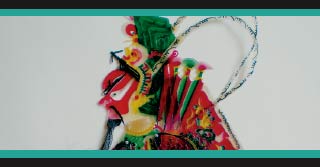 |
SHADOW PUPPETS
21/10 ~ 02/11
2008
Shadow plays first appeared in
Wannan some 400 years ago and are popular among the people. Shadow play puppets
are made of strips of buffalo hide or yellow cow leather. There are rules for
carving: ‘first carve the head and face, next the eyebrows, eyes and nose tip,
then the hair and costume and finally the body’.
He Zehua is a shadow play artist
from Anhui and a ninth-generation successor to the shadow plays of Wannan. He
has dedicated himself to the promotion and study of this art as well as its
promotion abroad. He is the founder of the South China Shadow Play Folk Art
Museum, which produces and performs shadow-plays and is acclaimed as the only
non-government troupe retaining the traditional heritage of shadow play theatre. |
| |
|
 |
NUT CARVING
21
/ 10
~ 02 / 11
2008
Nut carving exploits the shapes,
characteristics and irregular variations of nuts to fashion persons, animals and
landscapes. The craft of nut carving, which includes picking, selection,
composition, carving and preservative coating, demands that the artist possess
patience, an eye for detail, conceptual thinking and a profound cultural
knowledge in order to be able to instil boundless vitality in the creations.
Ma Yongbing, a nut carving artist
from Xuancheng in Anhui Province, is renowned for his unique carving style and
has created more than 1,000 nut carving pieces to date, all of which are finely
cut, sophisticated and of profound significance. He is acknowledged as the ‘No.
1 nut carver in Xuancheng’ by his industry peers. |
| |
|
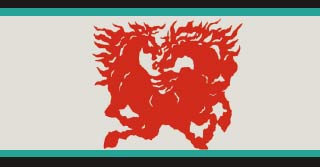 |
PAPER CUTTING AND TEARING
04 ~ 16 /
11
2008
Paper cutting is a time-honoured
traditional folk art in China, which literally cuts out the intended images from
paper. Scissors and knife are the tools most often used, but more recently, the
art of paper tearing has evolved.
Zhang Yuzhu has engaged in the
artistic creation of paper cutting and tearing works for 30 years, and is
renowned for his exquisite technique of tearing horse motifs in paper. From
among his extensive works, the “Portrait of Running Horses” was acquired by the
collection at the National Art Museum of China, while his “Portrait of Eight
Horses” was bestowed the most prestigious honour at the 4th Shanhua Award for
Chinese Folk Art and Literature. |
| |
|
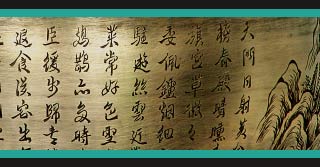 |
BRONZE CARVING
04 ~ 16 / 11
2008
Bronze carving refers to the
carving of characters and images on bronzeware, and its creations are rare due
to the highly sophisticated techniques involved. Bronze carvings, particularly
on bronze pots, basins, stationery and smoking sets, have long been favoured by
the literati and scholars. Cupronickel, brass, red copper and silver are often
the most favoured materials, while steel or iron plate may also be used after
special treatment.
Du Ping was born to a scholarly
family in Anhui. Initially learning printmaking from his artist father Du
Mingnian, he took up the art of bronze carving. His works employ exquisite
skills, a wide range of themes and fine, lifelike representations. He produced a
large bronze statue in collaboration with his father entitled “Song Qingling –
Mother of the Nation”, which was acquired by a collection in Haikou, Hainan
Province. |
| |
|
 |
BAMBOO AND WOOD
CRAVING
18 ~ 30 / 11
2008
Both bamboo and wood are natural
materials. The various sculptural techniques in wood carving include ball
sculpture, relief carving, openwork and line carving, utilising wood of a
tenacious yet fine texture. Bamboo carving, on the other hand, may be divided
into two types: surface carving – as can be seen on incense holders and desk
items – and three-dimensional sculpture – figures, objects, birds and beasts
carved from bamboo root.
Hong Jianhua, a master of Chinese
crafts and fine arts, is a descendant of the Hui School of bamboo carving, a
part of the intangible cultural heritage of Anhui Province. His bamboo carving
“The Seven Sages of the Bamboo Grove” was added to the permanent collection of
modern bamboo carving at the Palace Museum in 2006, becoming the first modern
bamboo carving work to be acquired since the 1950s. Various other works of his
are highly appreciated and purchased at high prices by collectors. |
| |
|
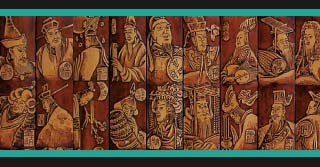 |
BAMBOO CARVING
18 ~ 30 / 11
2008
Bamboo carved to represent
calligraphy or painting is an art form that replaces paper with bamboo and pen
with knife. In terms of technique, it replicates the conventional carving
technique of liuqing, marrying harmoniously the arts of calligraphy and painting
with carving. It brings out beautifully the brushes, ink, dots and lines from
calligraphy or painting.
Fang Guangchun has engaged in the
study and creation of bamboo carving for some 20 years. He has produced a large
number of works, some of which were showcased to high acclaim in the Huang
Mountain Landscape Exhibition held in San Francisco and New York. |
| |
|
| |
|
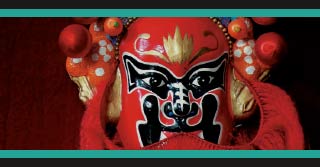 |
CLAY SCULPTURE
02 ~
14 / 12
2008
Clay sculpture is a popular
traditional folk art in China, rich in national flavour. It is handmade in
original or artificial colours and primarily features people and animals. Its
art works evolve from various schools or styles with distinguishing features
that add to the sum of Chinese folk arts.
Shi Yourong has been active in
art circles for 30 years and excels at modelling designs, creating matrixes and
clay moulds. In 1992, he founded the Gucheng Clay Figure Factory and devoted
himself to the promotion of clay sculpture handicrafts.
His assistant, Yuan Yangfei, has
been engaged in the field of arts for 22 years. Proficient in the colouring of
Wuxi clay figures, Yuan is a student of Luan Wenhui and Chang Xianglan, masters
of Tianjin clay figure making, and is intimately familiar with the techniques of
both the southern and northern schools. |
| |
|
BACK
|
|

|
|